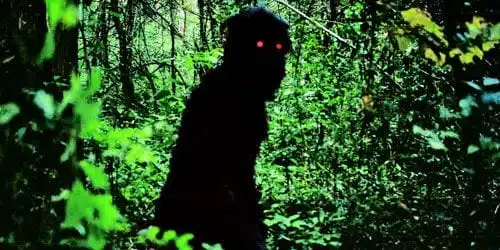
Late in Apichatpong Weerasethakul’s mesmerizing fairytale-like film Uncle Boonmee Who Can Recall His Past Lives, three characters follow spirits (both seen and unseen) through the thickets of a jungle. The path is winding and obscure, and becomes progressively darker. It is unclear where they’re headed, but they trust the steadfast ghost who guides them. Weerasethakul, who fashions a world that is at once outlandishly imaginative and down-to-earth, asks the viewer to make a similar leap of faith.
When the story begins, Uncle Boonmee (Thanapat Saisaymar) is gravely ill with kidney failure and has retreated to his farm in the countryside along with his sister-in-law, Jen (Jenjira Pongpas), and nephew Tong (Sakda Kaewbuadee). Despite his sickness, Boonmee continues to harvest honey from bees and do other work around the farm. The family members laze in hammocks and eat meals together. Their routine and Boonmee’s kidney treatments, methodically administered by his assistant, appear in similarly long takes.
This quiet is interrupted by word that “spirits and hungry animals” lurk in the countryside, drawn to Boonmee’s disease. One night at dinner, Huay (Natthakarn Aphaiwonk), Boonmee’s long dead wife, appears in an empty chair. Initially startled and perplexed, Boonmee, Jen, and Tong are soon accept her presence, and Huay becomes part of the household. Boonmee is then visited by memories of his past lives, which take both human and animal form — a distressed bull who escapes his master, and a veiled, forlorn princess who is seduced and pleasured by a randy catfish.
The film, which won 2010’s Palm d’Or, drifts between the real and the magical, the unsettling and the hopeful, where ghosts hear the prayers of the living, receive their offerings, and return to nurse them until death. In one scene, Boonmee and Huay’s ghost sit in bed, their arms wrapped around one another. He wonders where his spirit should go to find his wife once he dies. “In heaven?” he asks. Huay leans closer to Boonmee and quietly smells him. “Ghosts aren’t attached to places but to people, to the living,” she explains. “But what if I’m dead?” he inquires. Huay merely turns away, her silence portending a potentially lost and lonely future.
As it uses both silence and noise, Weerasethakul’s soundscape embodies the movie’s natural and supernatural themes. The “breath” of the film is the ubiquitous chirp of crickets, occasionally overtaken by an ominous thrum that signals the arrival of an otherworldly event.
Such events speak to a thematic concern, that appearances can be deceptive. A red-eyed, apelike creature is actually Boonmee’s long lost son, his body transformed after he mated with a legendary “monkey ghost.” On a more mundane plane, Boonmee appears to be a soft-spoken and guileless man, but beneath his serene demeanor lie guilt and doubt over the crimes of his past. He worries he has compromised his karma because he killed too many Communists in the war and too many insects on his farm. His visions of the future, which anticipate violence and humiliation (represented by chilling still photos), haunt him. As depicted by Weerasethakul, boundaries between good and evil, animal and human, and human and spirit are as ephemeral as the mist of the landscape’s waterfalls.
These shifting boundaries sometimes make Uncle Boonmee unsettling and bewildering. But it’s also remarkably material. In the cave where the spirit leads Boonmee, Jen, and Tong, there is a remote chamber whose walls are covered with crystals that flicker like a galaxy of stars. The film is much like that, mysterious and also palpable.
